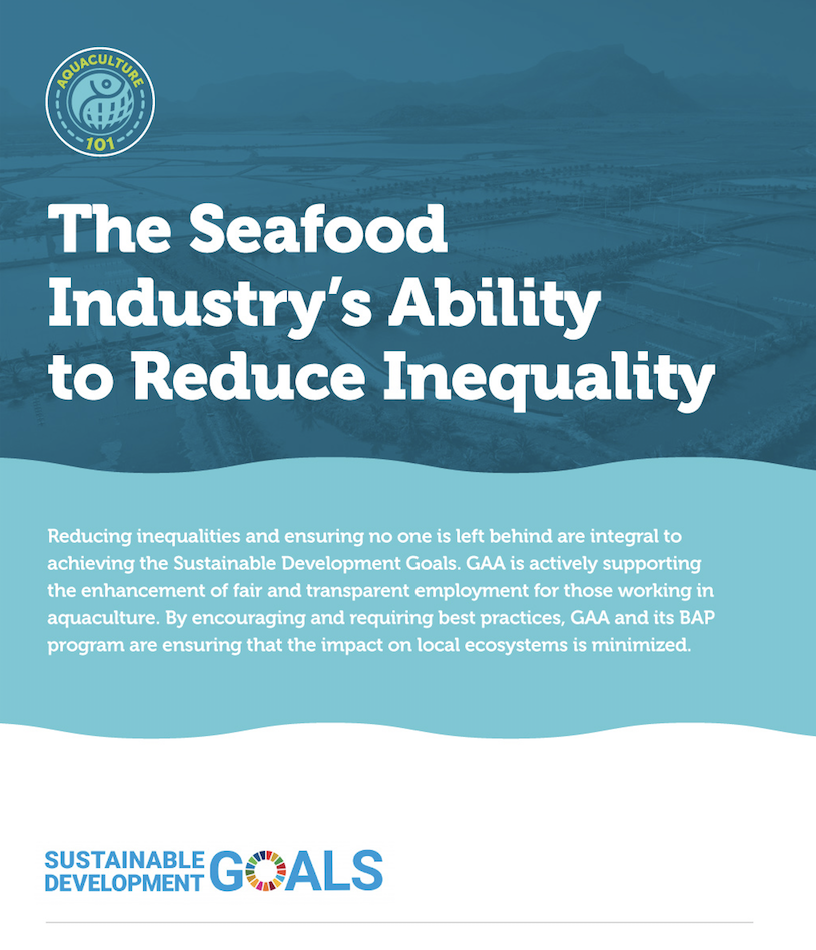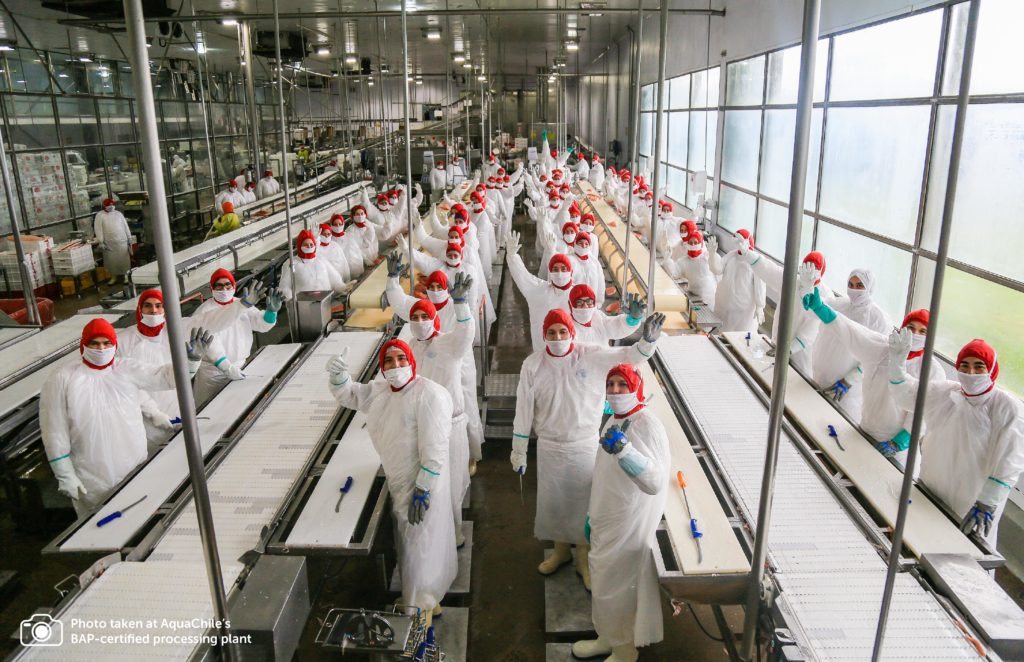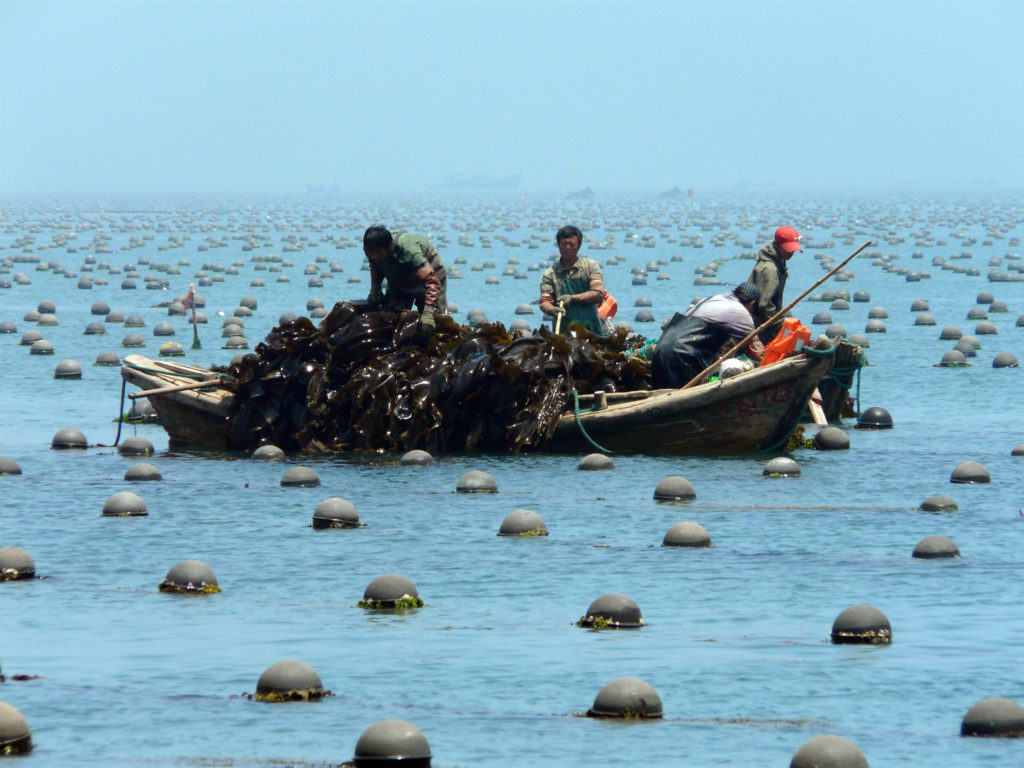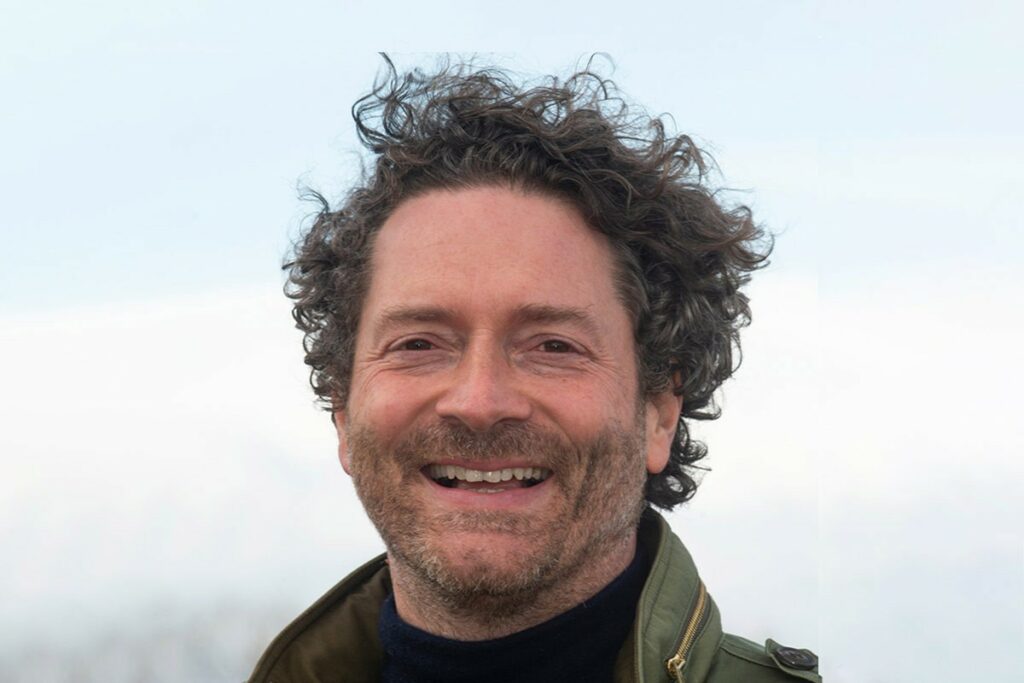The Seafood Industry’s Ability to Reduce Inequality
 Editor’s note: Aquaculture 101 is a campaign run by the Global Seafood Alliance to educate the public about the basics of aquaculture, to disseminate information in an easily understandable way. The campaign dispels myths and gives facts about the promising future of the industry. In 2020, the focus of Aquaculture 101 is on the alignment of aquaculture with the United Nations Sustainable Development Goals (SDGs). Each month we will delve into one of the SDGs and explore how aquaculture relates. Check out the hashtag #Aquaculture101 on social media for more information.
Editor’s note: Aquaculture 101 is a campaign run by the Global Seafood Alliance to educate the public about the basics of aquaculture, to disseminate information in an easily understandable way. The campaign dispels myths and gives facts about the promising future of the industry. In 2020, the focus of Aquaculture 101 is on the alignment of aquaculture with the United Nations Sustainable Development Goals (SDGs). Each month we will delve into one of the SDGs and explore how aquaculture relates. Check out the hashtag #Aquaculture101 on social media for more information.
Background of SDGs
In 2015, United Nations (UN) member states convened and agreed upon 17 goals known as the Sustainable Development Goals (SDGs). These goals are designed to guide citizens of the planet in a direction that will support future generations of people and animals to live and meet their respective needs in the face of a changing climate. The UN describes the SDGs as “an urgent call for action by all countries – developed and developing – in a global partnership. They recognize that ending poverty and other deprivations must go hand in hand with other strategies that improve health and education, reduce inequality and spur economic growth – all while tackling climate change and working to preserve our oceans and forests.”
What does this goal mean? Why is it important?
 The fifth and tenth Sustainable Development Goals go hand-in-hand. Goal 5 is gender equality, and goal 10 is reduced inequality. While these goals have two different outcomes, the process of reaching these goals is similar – including more diverse groups of people in the economy, as well as empowering companies to give them more opportunities.
The fifth and tenth Sustainable Development Goals go hand-in-hand. Goal 5 is gender equality, and goal 10 is reduced inequality. While these goals have two different outcomes, the process of reaching these goals is similar – including more diverse groups of people in the economy, as well as empowering companies to give them more opportunities.
According to the United Nations, “Gender equality is not only a fundamental human right, but a necessary foundation for a peaceful, prosperous and sustainable world. There has been progress over the last decades: More girls are going to school, fewer girls are forced into early marriage, more women are serving in parliament and positions of leadership, and laws are being reformed to advance gender equality. Despite these gains, many challenges remain: discriminatory laws and social norms remain pervasive, women continue to be underrepresented at all levels of political leadership, and 1 in 5 women and girls between the ages of 15 and 49 report experiencing physical or sexual violence by an intimate partner within a 12-month period.
 Inequality within and among countries is a persistent cause for concern. Despite some positive signs toward reducing inequality in some dimensions, such as reducing relative income inequality in some countries and preferential trade status benefiting lower-income countries, inequality still persists.”
Inequality within and among countries is a persistent cause for concern. Despite some positive signs toward reducing inequality in some dimensions, such as reducing relative income inequality in some countries and preferential trade status benefiting lower-income countries, inequality still persists.”
Reducing inequalities and ensuring no one is left behind are integral to achieving the Sustainable Development Goals. Any sort of inequality can threaten economic opportunities, increase poverty, and even lead to environmental degradation.
How does aquaculture measure up?
Women participate in all segments of the seafood industry, including fishing, farming, trading, selling, monitoring, administration, and most notably, processing. In fact, just about half of the seafood work force is made up of women. However, just because many women work in seafood, does not mean that the seafood industry has met the goals of SDG 5. Most women in seafood work in processing, where upward economic mobility is limited. There is more work to be done to ensure women are represented in higher-ranking positions across the entire industry.
 The reason why so many women work in seafood processing is because this job provides a stable income, and these positions are available in many areas across the world. As the demand for farmed seafood continues to rise, so too will the availability job opportunities for working females in more rural areas.
The reason why so many women work in seafood processing is because this job provides a stable income, and these positions are available in many areas across the world. As the demand for farmed seafood continues to rise, so too will the availability job opportunities for working females in more rural areas.
With respect to reducing inequality globally in SDG 10, this has much to do with inspiring economic growth and alleviating global poverty. The aquaculture align and intersect with reducing inequality. When people don’t have jobs or income, nutritious food can be hard to come by. Aquaculture not only creates nutritious food locally, but also employs impoverished people in the process. The industry, most notably when involved in rural communities, can contribute to these goals by generating jobs and healthful food.
How do GSA/BAP apply
 Our mission at GSA is to educate about, advocate for, and demonstrate responsible aquaculture practices. We hope to inspire and empower the world to eat responsibly farmed seafood – and seafood as a whole. With that as our mission, many facets of what we do aligns with SDGs 5 and 10.
Our mission at GSA is to educate about, advocate for, and demonstrate responsible aquaculture practices. We hope to inspire and empower the world to eat responsibly farmed seafood – and seafood as a whole. With that as our mission, many facets of what we do aligns with SDGs 5 and 10.
GSA is actively supporting the enhancement of fair and transparent employment for those working in aquaculture. By encouraging and requiring best practices, GSA and its Best Aquaculture Practices (BAP) certification program are ensuring that the impact on local ecosystems is minimized.
Learn more about this year’s virtual GOAL!
Conclusion
Inequality is a real, palpable issue in every corner of our world. Aquaculture can be a part of the solution by lifting up marginalized voices. Farmed seafood can contribute to reducing global inequality through providing economic opportunities for women and disadvantaged people, as well as access to fresh, safe, nutritious food.
Read more of our Aquaculture 101 series and check it out on social media with the hashtag #Aquaculture101!
View the full Seafood Industry’s Ability to Reduce Inequality infographic.





